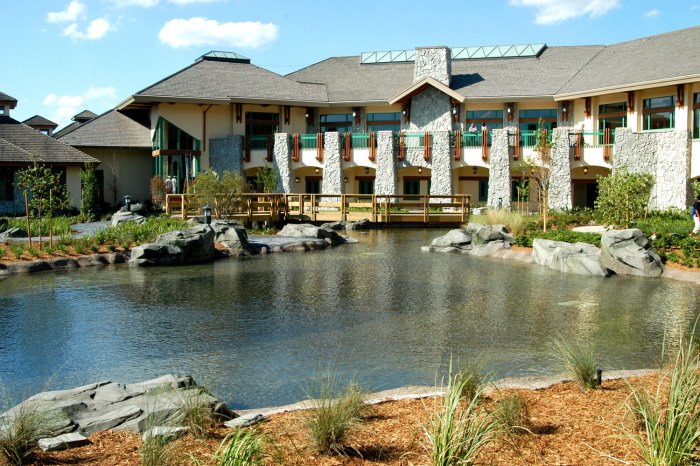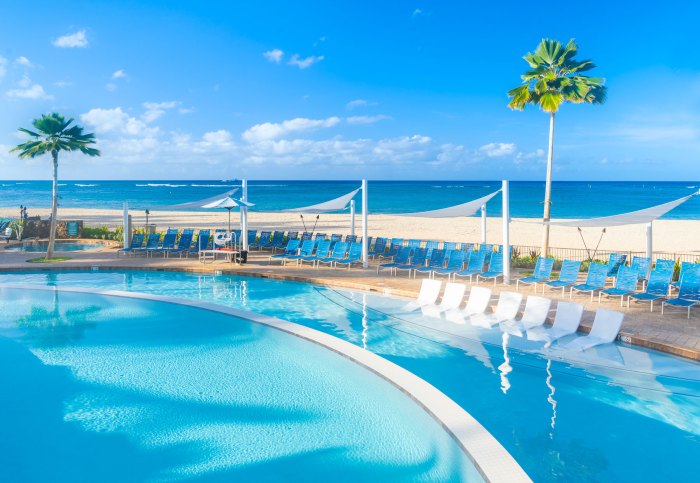Military Resorts represent a niche yet significant sector within the hospitality industry, catering to a specific demographic with unique needs and preferences. These facilities, ranging from those adjacent to active bases offering convenient access to services for personnel and families, to remote locations providing secluded retreats, offer a blend of leisure and security. Understanding their historical evolution, target audiences, amenities, and economic impact reveals a compelling story of adaptation and specialized service provision.
This exploration delves into the complexities of this unique market, examining its current state and future trajectory.
The diverse landscape of military resorts encompasses a wide range of facilities, each tailored to meet the specific requirements of its clientele. From family-friendly resorts with recreational activities to exclusive retreats designed for high-ranking officers, the common thread is a commitment to providing a safe and comfortable environment for those who serve and their families. The economic contributions of these resorts to local communities and the broader economy are also significant, highlighting their role beyond mere leisure destinations.
Defining “Military Resorts”

The term “military resort” lacks a universally agreed-upon definition, varying significantly depending on context and historical period. It generally refers to facilities providing recreational and leisure opportunities primarily for military personnel and their families, but the scope of amenities and target audience can differ substantially. These facilities may be directly operated by the military, managed by private contractors under military contract, or even established through partnerships between the military and civilian organizations.
Understanding the nuances of this term requires examining its historical evolution and comparing it to its civilian counterparts.Military resorts serve a multifaceted purpose beyond mere recreation. They contribute to troop morale and well-being, offering respite from the rigors of military life and strengthening unit cohesion. Strategically located facilities may also serve as logistical hubs or staging areas, subtly blending leisure with operational readiness.
This dual functionality is a key distinction from civilian resorts.
Types of Military Resort Facilities
The range of facilities encompassed by the term “military resort” is broad. These can include everything from modest recreational centers on military bases offering basic amenities like swimming pools and gyms, to expansive, fully-equipped resorts with golf courses, spas, and family-friendly activities located near training areas or deployment points. Some might be located in geographically isolated areas, providing essential leisure and social opportunities for personnel stationed in remote locations.
Others might be integrated into larger military installations, providing a range of services to enhance quality of life for personnel and their families residing on base. The specific amenities offered are dictated by budget, location, and the specific needs of the military personnel served.
Historical Evolution of Military Resorts
The concept of military resorts has evolved alongside the development of modern warfare and military welfare initiatives. Early examples were often simple rest areas or temporary camps providing basic necessities for troops. The post-World War II era witnessed a significant expansion of military recreational facilities, driven by a greater focus on the psychological well-being of service members and their families.
The Cold War further fueled the growth of military resorts, particularly in strategic locations, often incorporating elements of preparedness or operational readiness into their design and functionality. This trend continues today, with military resorts reflecting contemporary priorities in military welfare and operational requirements.
Comparison with Civilian Resorts
While both military and civilian resorts offer leisure and recreation, several key differences exist. Civilian resorts primarily focus on generating profit and attracting a broad range of clientele. Amenities and services are tailored to maximize guest satisfaction and revenue. Military resorts, however, are primarily concerned with enhancing troop morale, fostering unit cohesion, and providing welfare support for service members and their families.
This often results in different pricing structures (often subsidized for military personnel), amenities tailored to the needs of a specific population (families with children, for example), and a more structured environment. Security protocols and access restrictions are also considerably more stringent in military resorts.
Future Trends and Challenges

The military resort industry, while nascent, faces a complex interplay of evolving trends and significant challenges. Its future trajectory hinges on adapting to shifting geopolitical landscapes, technological advancements, and evolving consumer preferences. Success will depend on a strategic approach that balances profitability with responsible development and a keen awareness of potential pitfalls.The industry’s growth is intrinsically linked to broader global trends.
Increased military spending in certain regions, coupled with a rising global middle class with disposable income, creates a potential market for specialized leisure and recreation services catering to military personnel and their families. However, this growth is not guaranteed, and significant hurdles must be overcome.
Emerging Market Segments and Demographics
The military resort sector is not monolithic. Future growth will likely depend on identifying and catering to specific niche markets. For example, resorts focused on adventure tourism, incorporating activities like survival training or tactical simulations, may see increased demand. Similarly, resorts offering specialized rehabilitation and wellness programs for veterans could attract significant investment and clientele. Demographic shifts, such as an aging veteran population, will necessitate the development of resorts tailored to accessibility and specific health needs.
Understanding these evolving demographic needs will be crucial for targeted marketing and resort design.
Technological Advancements and Integration
Technological innovation will play a critical role in shaping the future of military resorts. The integration of virtual and augmented reality (VR/AR) technologies could revolutionize training and recreational activities. Imagine immersive simulations replicating real-world combat scenarios for training purposes, or VR-based historical recreations enhancing the resort experience. Moreover, advancements in sustainable energy solutions and smart building technologies can significantly reduce operational costs and minimize the environmental footprint of these facilities, appealing to environmentally conscious consumers.
The adoption of sophisticated security systems and data analytics will also enhance safety and operational efficiency.
Sustainability and Environmental Concerns, Military Resorts
The environmental impact of military resorts must be carefully considered. Many potential locations are situated in sensitive ecological areas. Sustainable practices, such as responsible water management, waste reduction, and the use of renewable energy sources, are not just ethically responsible but also economically advantageous in the long run. Resorts that prioritize environmental stewardship will likely attract a growing segment of environmentally conscious travelers and investors.
This will require careful planning, adhering to strict environmental regulations, and potentially incorporating eco-tourism elements into the resort’s offerings.
Geopolitical Factors and Regulatory Landscape
The geopolitical landscape significantly impacts the feasibility and profitability of military resorts. Regional instability, conflicts, and shifting international relations can directly affect tourism patterns and investor confidence. Furthermore, navigating the regulatory environment, which may involve stringent security protocols, environmental regulations, and land-use restrictions, presents a significant challenge. Careful due diligence, proactive engagement with local authorities, and a robust risk assessment strategy are essential for navigating these complexities.
Successful operators will need to demonstrate a deep understanding of and responsiveness to the geopolitical and regulatory contexts in which they operate.
The military resort industry presents a fascinating case study in specialized hospitality, blending leisure with security and catering to a dedicated clientele. While facing unique challenges related to location, accessibility, and marketing, the sector demonstrates remarkable resilience and adaptability. Future growth will likely depend on innovation in amenities, sustainability initiatives, and a continued understanding of the evolving needs of its target audience.
The ongoing evolution of military resorts promises a compelling narrative of adaptation and service within a specialized market.

